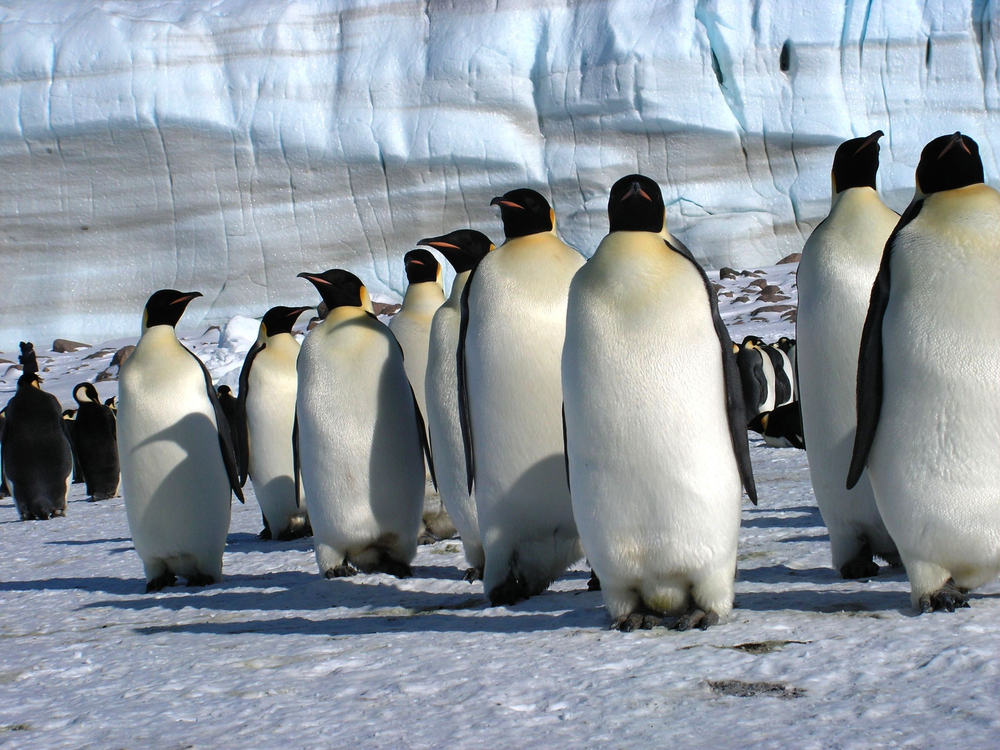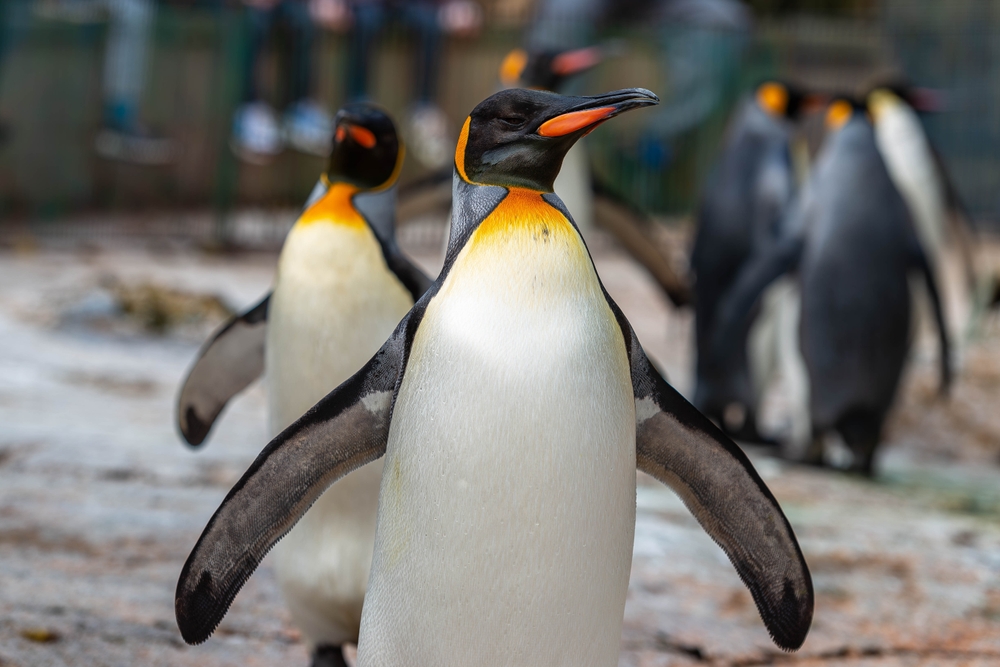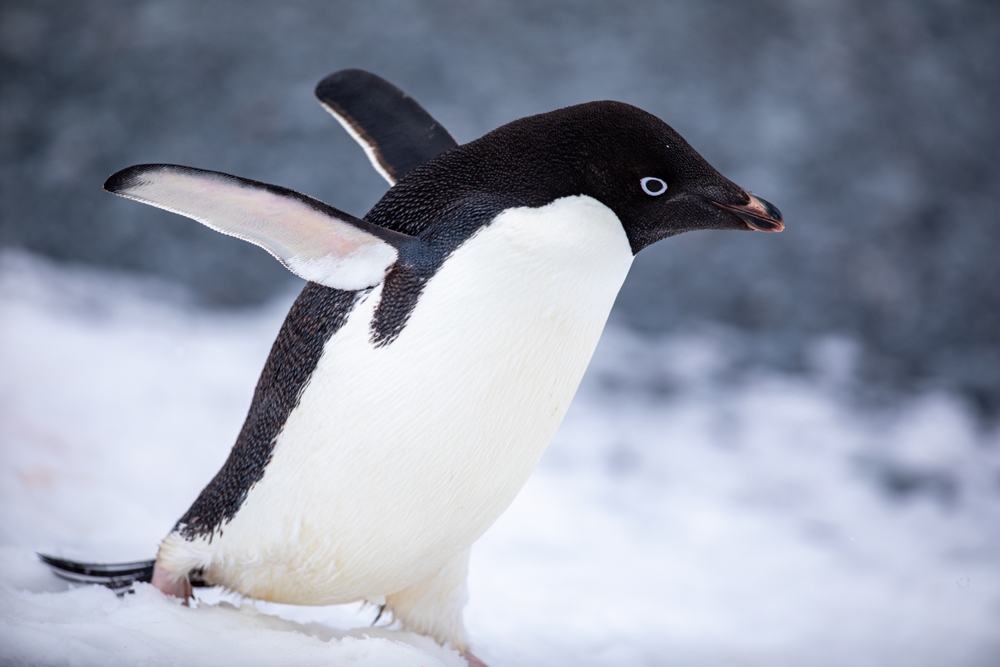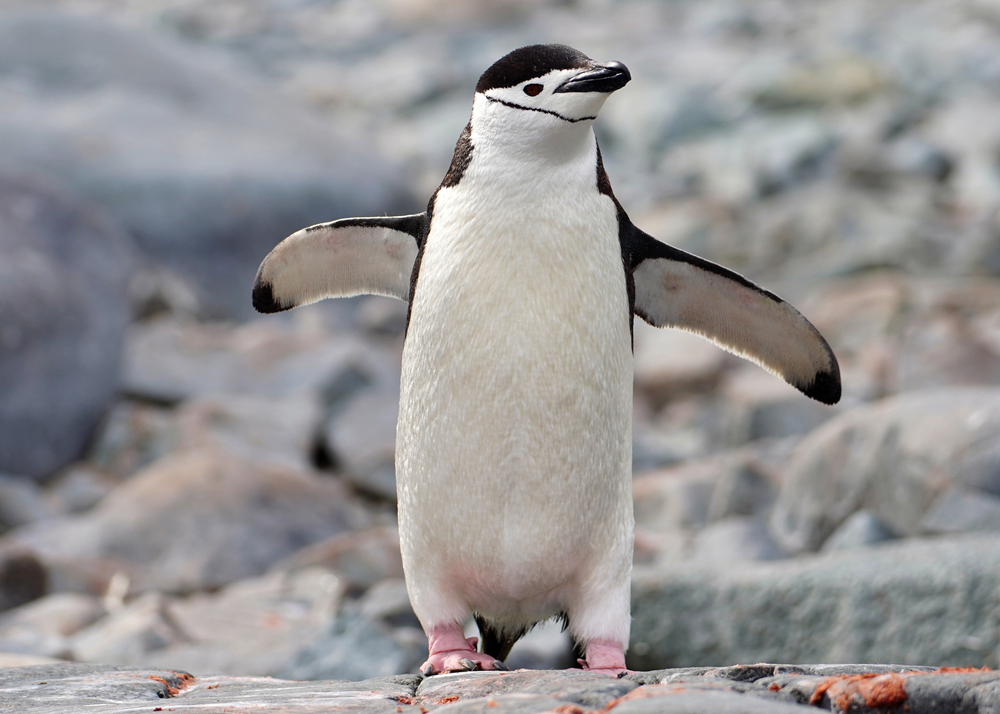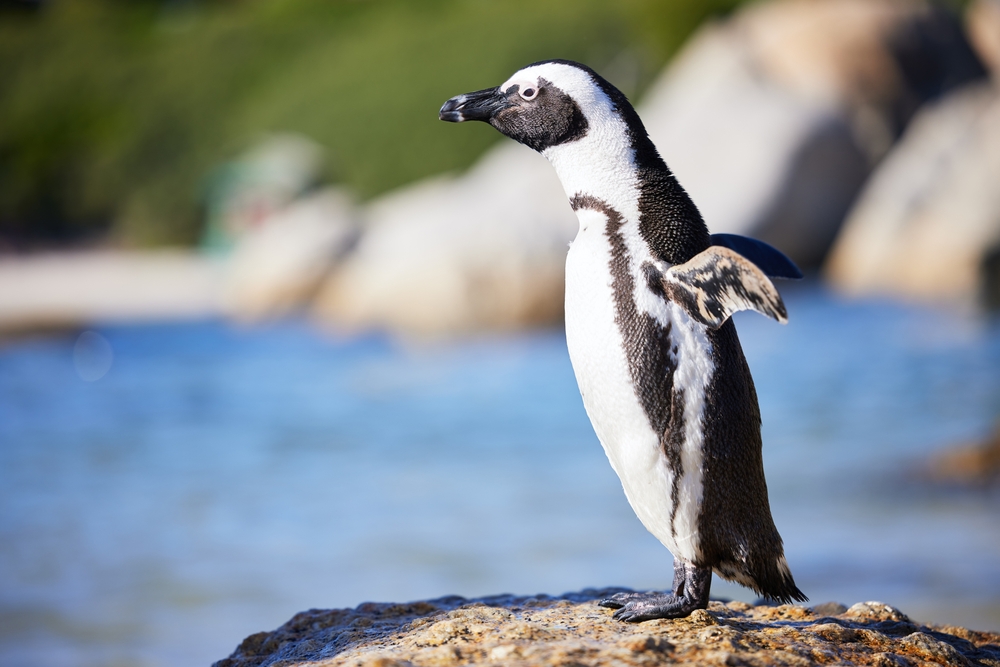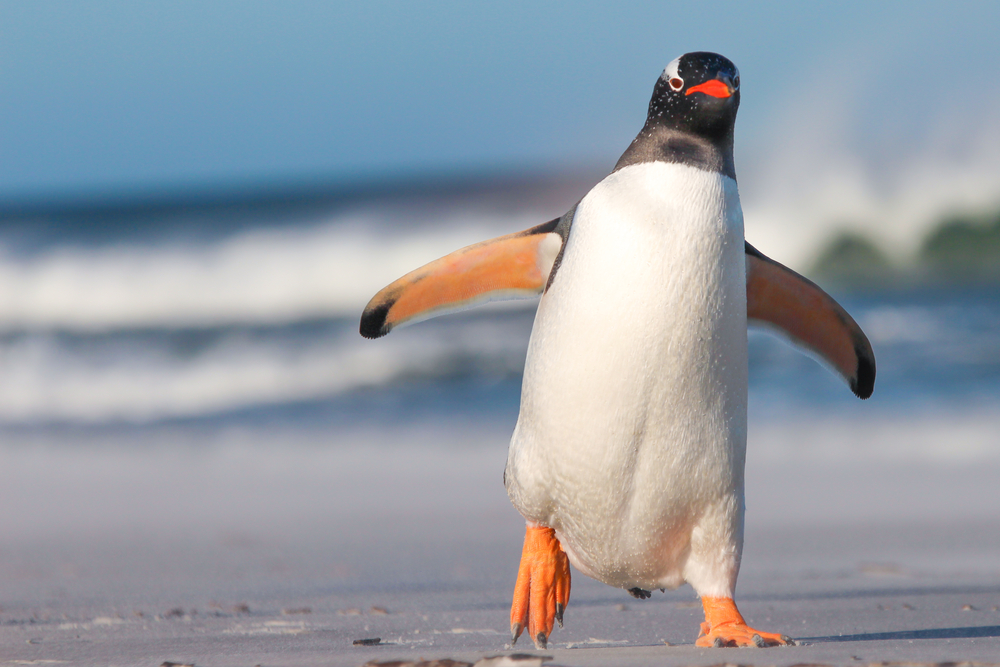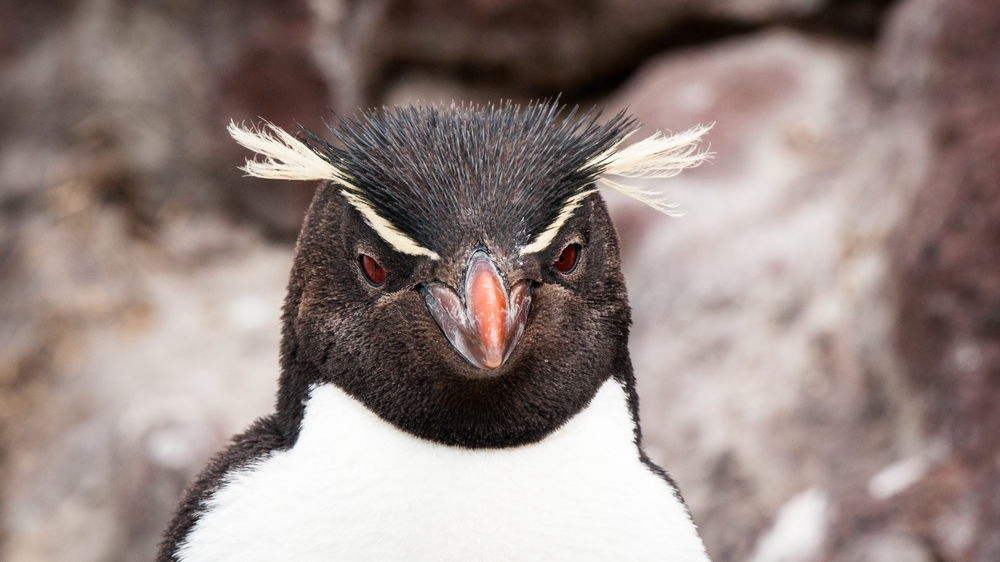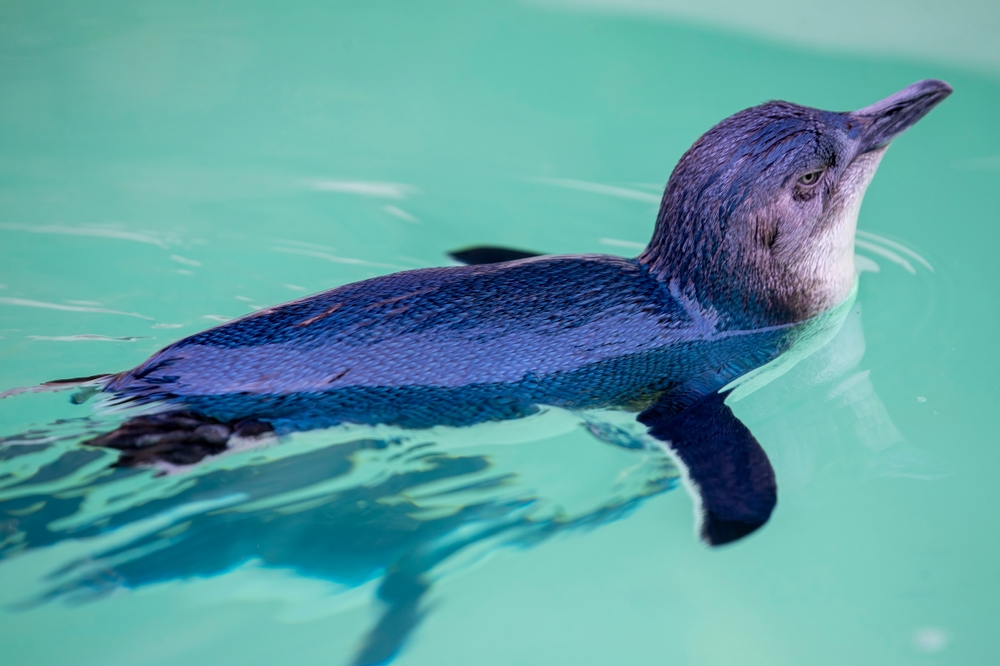The closest relative to the Emperor Penguin is the King Penguin (Aptenodytes patagonicus). Both belong to the same genus (Aptenodytes), sharing similar coloration and body form, though King Penguins are smaller and breed on sub-Antarctic islands rather than the Antarctic continent.
About
The Emperor Penguin (Aptenodytes forsteri) is the tallest and heaviest of all penguins, belonging to the Spheniscidaefamily. Endemic to Antarctica, it is a species uniquely adapted to survive in the harshest climate on Earth, enduring subzero temperatures, blizzards, and months of darkness during the polar winter. Their remarkable life cycle and cooperative behaviors make them one of the most studied and iconic seabirds in the world.
Emperor Penguins stand about 1.1 to 1.3 meters (43 to 51 inches) tall and weigh between 22 and 45 kilograms (49 to 99 pounds), with males typically heavier. Their plumage is elegant, with black backs, heads, and wings contrasting with a white belly and pale yellow to orange patches on the neck and chest. Their streamlined bodies and strong flippers allow them to dive to depths over 500 meters (1,640 feet), making them one of the deepest-diving birds.
Unlike other penguins, Emperor Penguins breed during the Antarctic winter. After females lay a single egg, they transfer it to the males, who balance it on their feet under a brood pouch. Males then fast for about two months while incubating the egg, huddling together in tight groups to conserve warmth. Females return from foraging at sea just as the chicks hatch, and both parents share in raising the young.
Their diet consists mainly of fish, krill, and squid, which they hunt beneath the ice in coordinated foraging dives. Emperor Penguins are vital to the Antarctic food web, serving as both predators and prey for leopard seals and orcas.
Currently listed as Near Threatened, the species faces risks from climate change, as melting sea ice reduces breeding grounds and affects food availability.
Majestic, resilient, and highly social, the Emperor Penguin is an enduring symbol of Antarctica’s beauty and fragility.
Physical Characteristics
Emperor Penguins are the largest of all penguin species, built for survival in the extreme cold of Antarctica. Their impressive size and striking coloration make them instantly recognizable.
-
Coat/Plumage: Their plumage is dense and waterproof, consisting of black feathers on the back, head, and wings, with a contrasting white belly. They have pale yellow breasts that fade into bright golden-yellow patches near the ears and upper chest.
-
Face: The head is mostly black with a subtle purplish sheen. Distinctive orange-yellow markings stretch from the ears down the sides of the neck.
-
Body: Sturdy and barrel-shaped, with thick layers of fat and feathers that insulate them against Antarctic temperatures as low as –60 °F (–51 °C).
-
Flippers: Short, strong, and covered with small stiff feathers, they function like paddles for powerful propulsion underwater.
-
Feet: Large, black, and webbed with strong claws, adapted for walking on ice and supporting the penguin during long incubation shifts.
-
Tail: Short and stiff, used for balance when standing upright on ice.
Size:
-
Height: About 43 to 51 in (110 to 130 cm).
-
Weight: Between 49 to 99 lbs (22 to 45 kg), with males often heavier during the breeding season due to extended fasting.
The Emperor Penguin’s robust build, insulating fat layer, and specialized feathers are all evolutionary adaptations for thriving in the harshest climate on Earth. Their size makes them powerful swimmers capable of diving to extraordinary depths in search of food.
Reproduction
The reproductive cycle of Emperor Penguins is one of the most remarkable in the animal kingdom, adapted to Antarctica’s extreme winter.
-
Mating and Courtship:
-
Emperor Penguins are monogamous within a breeding season, though pairs often change mates between years.
-
Courtship begins in March–April when adults trek up to 75 miles (120 km) inland to reach traditional breeding grounds on stable sea ice.
-
Pairs engage in synchronized calls and bowing displays to form and strengthen bonds.
-
-
Egg Laying and Incubation:
-
The female lays a single egg around May or June.
-
After laying, she transfers the egg carefully to the male, who balances it on his feet and covers it with a feathered brood pouch for warmth.
-
The male incubates the egg for about 65 days, fasting the entire time through the Antarctic winter.
-
-
Chick Development:
-
The egg hatches in July or August, when conditions are still severe.
-
Males feed the newly hatched chick with a secretion called “crop milk” until the female returns from the sea with regurgitated fish.
-
Both parents then share feeding duties.
-
-
Crèche and Independence:
-
By about 7 weeks, chicks form crèches for warmth and protection while adults forage.
-
Fledging occurs at 5 to 6 months of age, when chicks molt into waterproof feathers and head to sea before the sea ice breaks up.
-
Emperor Penguins’ reproductive strategy is unique: they are the only penguins to breed during the Antarctic winter. Their reliance on male fasting and endurance during incubation is one of nature’s most extraordinary parental commitments.
Lifespan
Emperor Penguins, the largest penguin species, face extreme conditions in Antarctica that shape their survival and longevity.
-
Lifespan in the Wild:
Emperor Penguins generally live 15 to 20 years, with some individuals reaching up to 25 years under favorable conditions. Juvenile mortality is high, as many chicks do not survive their first year due to predation, starvation, or harsh weather. -
Lifespan in Captivity:
Rarely kept in captivity because of their specialized environment requirements, Emperor Penguins may live slightly longer in well-managed facilities, though such cases are uncommon.
Threats to the Emperor Penguin:
-
Climate Change: The greatest threat, as melting and unstable sea ice reduces critical breeding habitat. Loss of sea ice also disrupts access to krill and fish, their main food sources.
-
Predation: Chicks and juveniles are preyed upon by skuas, giant petrels, and sheathbills, while adults risk predation from leopard seals and killer whales in the water.
-
Food Availability: Declines in krill and fish populations linked to ocean warming and commercial fishing reduce their primary food supply.
-
Harsh Conditions: Extended Antarctic winters test adult endurance, particularly during long fasting and incubation periods.
Conservation efforts, including international protections under the Antarctic Treaty System and the designation of marine protected areas in the Southern Ocean, are critical for ensuring the Emperor Penguin’s future survival.
Eating Habits
Emperor Penguins are carnivorous seabirds that depend on the rich marine life of the Southern Ocean to survive Antarctica’s extreme conditions.
-
Diet:
Their primary prey includes Antarctic silverfish, krill, and squid. Diet composition varies with season and location, but fish often make up the majority. -
Foraging Strategy:
Emperor Penguins are exceptional divers, capable of reaching depths of over 1,800 ft (550 m) and holding their breath for more than 20 minutes. These deep dives allow them to access prey beyond the reach of most other penguin species. -
Hunting Behavior:
They use their strong flippers to propel through the water with speed and agility, often foraging in groups to increase hunting efficiency and reduce predation risk.
During the breeding season, adults must travel long distances from inland colonies to open water, making foraging trips especially demanding. -
Feeding the Young:
Parents store food in their stomachs and regurgitate it to feed chicks. When females return from the sea after egg-laying, they bring the first substantial meal to newly hatched chicks. -
Seasonal Variation:
Availability of fish, krill, and squid fluctuates with sea ice extent and ocean productivity. Emperor Penguins adapt by varying their diet, but significant changes in sea ice patterns can greatly impact feeding success.
The Emperor Penguin’s remarkable diving ability and group foraging strategies make it one of the most specialized hunters among penguins, securing a vital role in the Antarctic marine ecosystem.
Uniqueness
The Emperor Penguin (Aptenodytes forsteri) is the most iconic of all penguins, with several extraordinary traits that distinguish it from every other species:
-
Largest Penguin: Standing up to 51 in (130 cm) tall and weighing nearly 100 lbs (45 kg), it is the heaviest and tallest of all penguin species.
-
Winter Breeders: Uniquely, they breed during the harsh Antarctic winter, enduring months of darkness and temperatures as low as –60 °F (–51 °C).
-
Male Incubation: Males incubate the single egg on their feet under a brood pouch, fasting for about two months until the chick hatches—one of nature’s most extreme parental sacrifices.
-
Extraordinary Divers: Emperor Penguins are the deepest and longest-diving birds, reaching depths over 1,800 ft (550 m) and holding their breath for up to 20 minutes.
-
Thermal Masters: Their dense plumage, fat reserves, and cooperative huddling behavior allow them to survive in the coldest environment on Earth.
-
Cultural Icon: Featured in films and documentaries such as March of the Penguins, they symbolize endurance, cooperation, and life against all odds.
-
Indicator Species: As sea ice specialists, they serve as critical indicators of climate change impacts in the Antarctic ecosystem.
The Emperor Penguin’s combination of size, diving ability, breeding cycle, and resilience in extreme cold makes it one of the most extraordinary and scientifically significant birds on the planet.
Be the First to Share Photos of This Species.
FAQ’s
1. What is the species closest to the Emperor Penguin?
2. How does the Emperor Penguin compare to other penguins?
Emperor Penguins are the largest of all penguins, taller and heavier than any other species. Unlike most penguins that breed in warmer months, Emperors uniquely breed during the Antarctic winter. They are also unmatched in diving ability, capable of diving deeper and longer than any other bird.
3. What national parks provide an opportunity to see the Emperor Penguin?
Emperor Penguins live only in Antarctica, where they are protected under the Antarctic Treaty System. Opportunities to see them are limited to remote, regulated regions such as:
-
Ross Sea Region Marine Protected Area – one of the largest Emperor Penguin populations.
-
Gould Bay and Snow Hill Island (Weddell Sea, Antarctic Peninsula) – famous Emperor Penguin colonies accessible by special expeditions.
-
Atka Bay (near Neumayer Station, East Antarctica) – a well-studied colony often observed by researchers.



































































